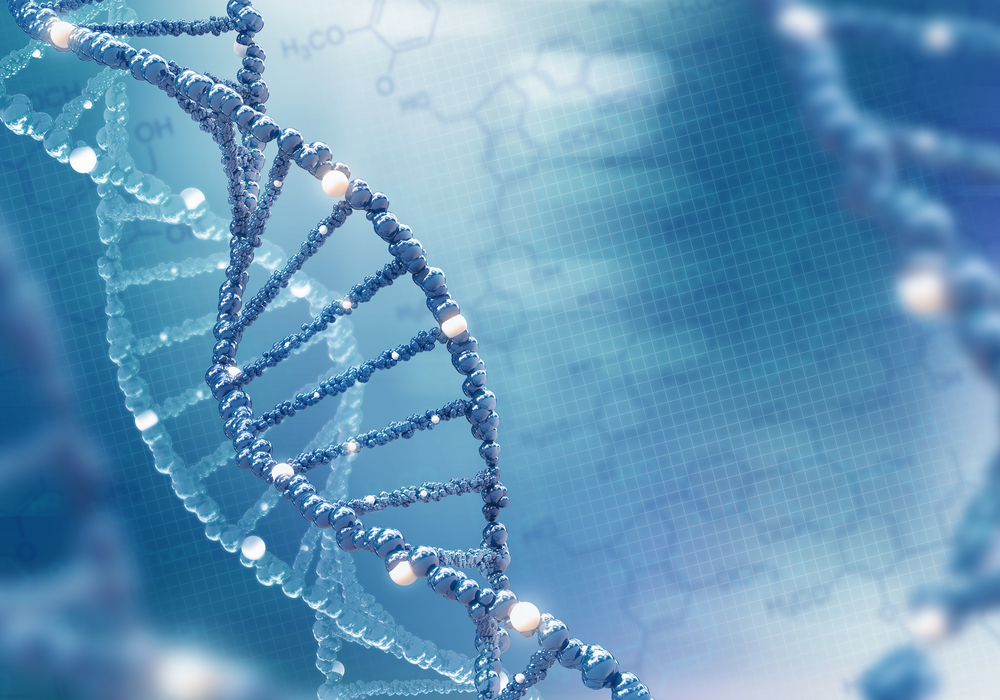Investigators Discover Potential New SMA Genetic Modifier, Case Report Shows
Written by |

Researchers have discovered a potential new genetic modifier that can influence the course and severity of spinal muscular atrophy (SMA), according to a recent case study.
The findings may help shed light on how two members of the same family may be affected by different forms of the disease, the investigators said.
Described in the case report “Genomic analysis of a spinal muscular atrophy (SMA) discordant family identifies a novel mutation in TLL2, an activator of growth differentiation factor 8 (myostatin): a case report,” these findings were published in the journal BMC Medical Genetics.
SMA comprises a group of neurodegenerative disorders characterized by the gradual loss of motor neurons — the nerve cells responsible for controlling voluntary muscles — in the spinal cord, leading to muscle weakness. It is normally caused by mutations in the SMN1 gene, which provides instructions to make the SMN protein that is essential for motor neuron survival.
In humans, there is a second gene similar to SMN1, called SMN2, that also can also produce this key protein. SMN2 usually remains unaffected in SMA patients and is known to influence the course of the disease, depending on the number of copies present. For that reason, SMN2 is sometimes referred to as a disease modifier.
In addition to SMN2, several other genes are considered SMA modifiers, including SERF1, NAIP and GTF2H2.
“However, the severities of many SMA cases, especially the cases within a family, often failed to be explained by these modifiers, indicating the existence of other genes [and additional factors] modifying the symptoms of SMA,” the researchers said.
In this case report study, Chinese investigators described the rare case of a family in which two siblings — a boy and a girl born from healthy parents — were diagnosed with different forms of SMA. The girl had been diagnosed with SMA type 1, while her brother had been diagnosed with a milder form of SMA, type 3.
Although both siblings met the diagnostic criteria defined by the International SMA Consortium, the boy had much less severe symptoms than his sister. The girl, who died of pneumonia at age 11, was never able to sit or stand by herself, while her 16-year-old brother was able to sit and stand by himself once he reached age 1.
Using gene-sequencing, a technique that allows researchers to “read” DNA, the team found that both parents were carriers of a mutation in the SMN1 gene that was inherited by both of their children. This mutation, which was found in both copies of the SMN1 gene in both siblings, led to the deletion of the seventh exon of the gene. Exons are the coding sequences of a gene that provide instructions to make proteins.
Further analyses also confirmed that all family members carried two normal copies of known SMA modifiers, including SMN2, SERF1, NAIP and GTF2H2.
However, subsequent genetic analyses revealed that the brother had additional mutations in the TLL2 gene. Meanwhile, his sister had additional mutations considered pathogenic, or disease-causing, in the VPS13A gene. She also had a de novo mutation in the AGAP5 gene. A de novo mutation is one that appears for the first time in an individual, instead of being inherited from the parents.
“TLL2 is an activator of myostatin, which negatively regulates the growth of skeletal muscle tissue. Mutation in TLL2 has been proved to increase muscular function in mice model,” the investigators said.
Therefore, the mutations at TLL2, found in the brother, “were predicted … to alleviate the severity” of SMA, they said.
Importantly, SRK-015, an inhibitor of myostatin activation — TLL2’s target — is being developed by Scholar Rock. It is currently being tested in the TOPAZ Phase 2 clinical trial (NCT03921528).
“Our finding broadens the spectrum of genetic modifiers of SMA and will contribute to accurate counseling of SMA affected patients and families,” the researchers concluded.






